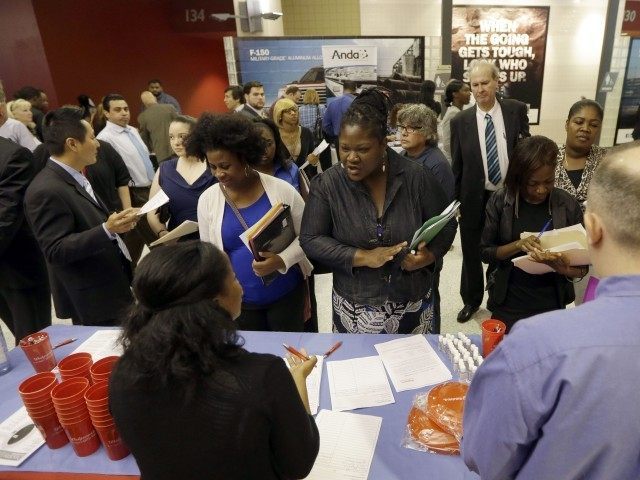The November jobs number just released showed 211,000 new jobs, a strong showing in-line with analysts’ estimates. The unemployment rate held steady at five percent – a post-Great Recession low.
But lost in the backslapping among the political class and the mainstream media is the fact that the labor market is not nearly as rosy as this picture makes it out to be.
Looking beyond the topline numbers in the report shows that wage growth and hours worked are still stagnant. Average weekly earnings declined to $871.13 from $872.27 last month, partially a result of weekly hours worked declining from 34.6 to 34.5. The number of people employed part time who would like to work full time increased by a whopping 319,000, reaching 6.1 million.
Perhaps the best way to cut through the competing numbers to get a true picture of labor market health is by looking at the labor force participation rate, which is a better measure of the true state of the economy because it captures those who have left the workforce altogether. This figure remains virtually unchanged at 62.5 percent – near the lowest level since 1972. (See this video below for an explainer about the difference between the unemployment rate and labor force participation rate.)
Some counter that the labor force participation rate is not a good indicator because it takes into account the elderly, who may be retired – a legitimate reason to be out of the labor force. Fair point. But the rate for working age adults, ages 25-54, is also wallowing at a level without rival since 1984. In fact, if the pre-recession participation rate for this demographic remained, an additional 2.5 million prime-age employees would be in the job market.
To truly get the economy going again, get more people back in the labor force, and end wage stagnation, unelected bureaucrats in Washington must get off the backs of job creators. Burdensome regulations, developed world-high business tax rates, and government blockage to capital access have stifled small business dynamism and job creation.
Proposed National Labor Relations Board rules, for instance, that drastically change the threshold at which employees are exempt from overtime, blacklist federal contractors who run afoul with Big Labor, and redefine the definition of “joint employer” may achieve a political agenda but will reduce hiring, wage growth, and business formation in the process.
Only when these issues are addressed will the labor market truly come back, increasing opportunity, earnings, and well-being for all Americans. But don’t expect to hear this truth from Washington politicians or the mainstream media.
Alfredo Ortiz is President and CEO of Job Creators Network

COMMENTS
Please let us know if you're having issues with commenting.